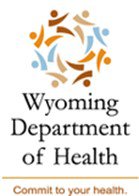Summary and Discussion
The 2015 Wyoming adult smoking rate of 16% is the lowest smoking rate recorded by the Wyoming ATS since its inception in 2002. From a high of 21% in 2006, the smoking rate in Wyoming has declined significantly. Cigarettes are still the most popular form of tobacco use in Wyoming, but ENDS use is now about as prominent as smokeless tobacco use. Two of the three most common reasons for using ENDS are cutting back or quitting cigarettes. The broader public health community has yet to determine how to balance the risk of ENDS with the potential for them to be less harmful than cigarettes.
The smoking habits of the vast majority of Wyoming adults begin when they are younger than 25, and especially before the age of 18. After age 25, very few adults begin to smoke or begin to smoke daily. A continued focus on preventing the initiation of smoking by youth and young adults could, over time, reduce the prevalence of smoking and associated health problems.
Opinions vary as to where and how smoking should be restricted. Wyoming adults have a high degree of agreement that indoor areas of restaurants and workplaces across the state should have smokefree indoor air. There is less agreement on smokefree air in casinos, clubs, bars, and outdoor work areas. Most adults report working in places that have smokefree policies but outdoor areas rarely do. Most exposure to secondhand smoke occurs in outdoor areas, including at work and public places.
The majority of smokers have tried to quit and want to quit for good. They are also paying more for cigarettes than they have in the past. However, the use of proven cessation aids is relatively low, and many tobacco users are not receiving screening and assistance from healthcare providers to help them quit. Only half of current tobacco users who saw a healthcare professional in the previous year were advised to quit, but over half of those were offered assistance. Greater collaboration with health professionals could result in more tobacco users becoming aware of, and receptive to, proven cessation aids and services.
Awareness of tobacco quitlines is an area of potential improvement. Less than half of nonsmokers were aware that a quitline (local or national) existed. The WQTP reports that friends and family of tobacco users (which would include nonsmokers) are key referral sources (WYSAC 2017). If more nonsmokers knew about the existence of this proven cessation aid, then they could inform and encourage tobacco users who may not know about it.
Native Americans, young adults, those with little formal education, and those who identify as LGBT have relatively high smoking rates. Although the smoking rate among women of child-bearing age is not exceptionally high, the health burdens of smoking while pregnant are substantial. Promoting quitting and reducing initiation among these groups will, over time, reduce the disparities in tobacco use and its health consequences.
The health consequences of smoking in Wyoming are similar to reports in the medical literature (USDHHS, 2014). Compared to nonsmokers, Wyoming smokers tend to be less healthy overall and are more prone to chronic illness. Reducing the prevalence of smoking will, over time, reduce the health and economic burden of smoking-attributable chronic disease in Wyoming.

